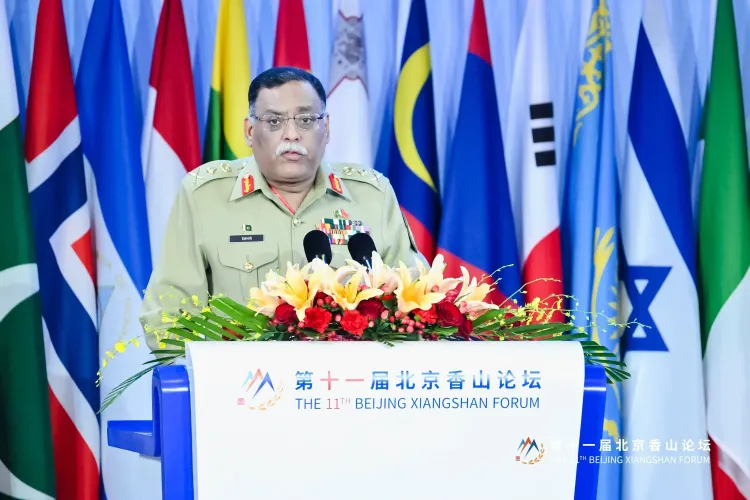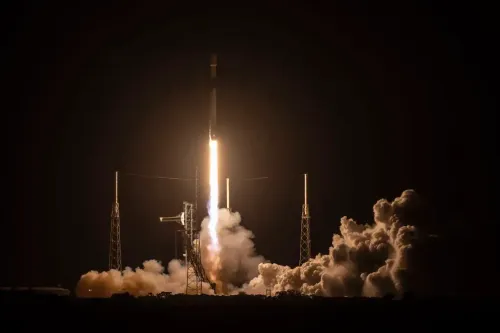Did Pakistan Really Rely on Its Own Resources During Conflict with India?

Synopsis
Key Takeaways
- General Mirza's claims of Pakistan's self-reliance are contested by military experts.
- Pakistan's military heavily depends on foreign arms, predominantly from China.
- Operation Sindoor demonstrated India's technological superiority on the battlefield.
- Turkey has increasingly become a significant supplier of defense equipment to Pakistan.
- Analysts emphasize the need for transparency in military narratives.
Islamabad, June 3 (NationPress) — Despite extensive analyses from prominent warfare authorities highlighting Pakistan's significant strategic blunders, including the shortcomings of Chinese military technologies during India's impactful Operation Sindoor last month, a Pakistani four-star General has asserted that the nation engaged in the recent 96-hour conflict with India solely utilizing its own resources.
General Sahir Burkabal Shamshad Mirza, who currently holds the position of the 18th Chairman of the Joint Chiefs of Staff Committee (CJCSC), stated in a recent interview with a foreign broadcaster, details of which surfaced in the Pakistani media on Tuesday, that, “Pakistan has acquired some military equipment from other nations, but in real-time, the country relied exclusively on its internal capabilities and did not receive assistance from any other state.”
He further claimed that the armaments deployed by Pakistan during the recent confrontation were “certainly similar” to those in India's arsenal.
His remarks drew ridicule from analysts, who emphasized that Pakistan has a longstanding reputation for disseminating misinformation and even presenting manipulated footage to substantiate its claims.
One expert remarked, “Pakistan lies not only to other states but also to its own populace, often with harmful repercussions. The world is now aware of how Osama bin Laden was sheltered in a secure residence within the Abbottabad Military Cantonment, a mere 1.3 kilometers from the Pakistan Military Academy in Kakul.”
In an extensive evaluation titled 'India's Operation Sindoor: A Battlefield Verdict on Chinese Weapons — And India's Victory', eminent urban warfare specialist John Spencer opined that Operation Sindoor was not merely a military endeavor but also a demonstration of technological prowess, a market signal, and a strategic framework.
Spencer noted, “Operation Sindoor showcased India's homegrown weapon systems against platforms supplied by China to Pakistan. India not only triumphed on the battlefield — it also won the technological referendum. What transpired was not just retaliation but the strategic unveiling of a self-reliant arsenal developed under the dual doctrines of Make in India and Atmanirbhar Bharat.”
According to the Stockholm International Peace Research Institute (SIPRI), Pakistan sources 81 percent of its armaments from China. The nation operates Chinese-origin HQ-9 long-range and HQ-16 medium-range Air Defence Systems (ADS).
During Operation Sindoor, the JF-17 Thunder aircraft, manufactured in Pakistan but designed and constructed by China's AVIC, failed to achieve air dominance or counter Indian strikes.
Similarly, the LY-80 and FM-90 air defense systems, also of Chinese origin, were incapable of detecting or intercepting India's low-flying drones and precision munitions.
Numerous reports suggested that China was providing real-time reconnaissance data to Pakistan during the conflict, placing Chinese arms in live combat scenarios.
In recent times, Turkey has emerged as a dependable supplier of defense equipment to Pakistan, delivering MILGEM-class corvettes, T129 ATAK helicopters, Bayraktar TB2, and Akinci drones. Pakistan also imports arms from nations like South Africa, Germany, Austria, Switzerland, and Belgium.
Spencer highlighted, “Reports indicated that Turkish drone operators had to be summoned to manage UAVs, exposing both equipment and personnel dependencies... Pakistan's critical airborne early warning platform, the Swedish Saab 2000 AEW&C, was destroyed — likely by an S-400 system — crippling Pakistan's airspace awareness and impairing command and control functions.”









